- Revenue Cycle Management
- COVID-19
- Reimbursement
- Diabetes Awareness Month
- Risk Management
- Patient Retention
- Staffing
- Medical Economics® 100th Anniversary
- Coding and documentation
- Business of Endocrinology
- Telehealth
- Physicians Financial News
- Cybersecurity
- Cardiovascular Clinical Consult
- Locum Tenens, brought to you by LocumLife®
- Weight Management
- Business of Women's Health
- Practice Efficiency
- Finance and Wealth
- EHRs
- Remote Patient Monitoring
- Sponsored Webinars
- Medical Technology
- Billing and collections
- Acute Pain Management
- Exclusive Content
- Value-based Care
- Business of Pediatrics
- Concierge Medicine 2.0 by Castle Connolly Private Health Partners
- Practice Growth
- Concierge Medicine
- Business of Cardiology
- Implementing the Topcon Ocular Telehealth Platform
- Malpractice
- Influenza
- Sexual Health
- Chronic Conditions
- Technology
- Legal and Policy
- Money
- Opinion
- Vaccines
- Practice Management
- Patient Relations
- Careers
The 10 Most Livable Mid-Sized Cities
Where is the ideal place to live in the United States? What factors go into choosing the best place for you and your family to settle long term? The AARP Public Policy Institute released their first results from a new "livability index" recently, naming the top cities and neighborhoods to live long into retirement.
Where is the ideal place to live in the United States? What factors go into choosing the best place for you and your family to settle long term? The AARP Public Policy Institute released their first results from a new “livability index” recently, naming the top cities and neighborhoods to live long into retirement. AARP looked at factors such as access to health care, community involvement, and affordable housing accessibility. Despite coming from AARP, the livability index is intended to inform people of all ages about the pros and cons of different communities.
They also broke cities into size categories: large (500,000+ people), medium (100,000-500,000 people), and small (25,000-100,000 people). Throughout the categories, the upper Midwest seemed to meet most of the requirements set forth by AARP, but in the larger cities the geography is more diverse. AARP also introduced a new tool where you can see the livability index of your current town.
The health scores we highlight are made up of several different categories, including the smoking and obesity rates, as well as patient satisfaction, access, and unnecessary hospitalization rates. We chose to highlight medium-sized cities, as not everyone wants to live in Seattle or Boston.
Here are the top 10 middle-sized cities according to the livability index:
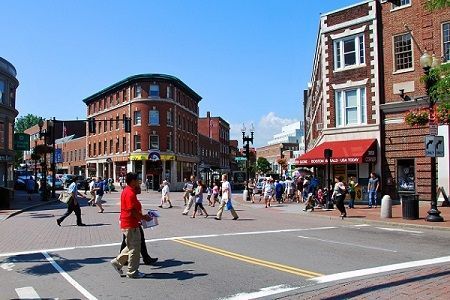
Overall Score (out of 100): 63
Health Score: 67
Cambridge, home to MIT and Harvard, ranks very highly in convenient transportation options and the types of neighborhoods available—meaning ones with parks, grocery stores, and easy access to jobs. The cost of living in Cambridge, though, costs the city some points, as do some of the environmental factors of being so
close to Boston.

Overall Score: 63
Health Score: 54
Funny accents and dark comedy movies aside, Fargo is considered a top place to live if you’re looking for a city with a small-town feel. Fargo rated highly with AARP for its civic engagement; there are plenty of organizations for locals to join to build a community, as well as plenty of cultural institutions to broaden horizons. Just watch out for the snow … and wood chippers.

Overall Score: 63
Health Score: 57
Unlike some of the other cities on this list, Lincoln’s high transportation scores aren’t because of public transport; the average resident spends much less time and money on transportation here compared to the rest of the US. Lincoln’s air and water quality is also rated very highly, letting residents breathe easier. Lincoln has average rates of smoking and obesity, while less than stellar patient satisfaction with their health care providers.
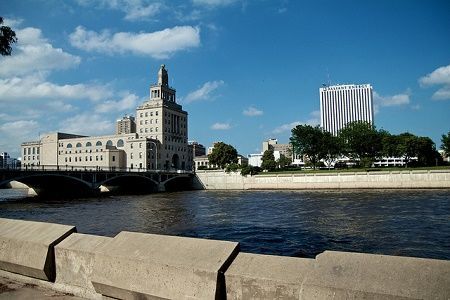
Overall Score: 64
Health Score: 48
Cedar Rapids has less income inequality and higher high school graduation and employment rates than your average American city. Residents there have a voter turnout of 74%, which bests the national average by 19 points. While residents in Cedar Rapids don’t have any problems accessing care in their area, less than half of patients are satisfied with the care they receive.
Image via Flickr user Stijn Debrouwere/Creative Commons License
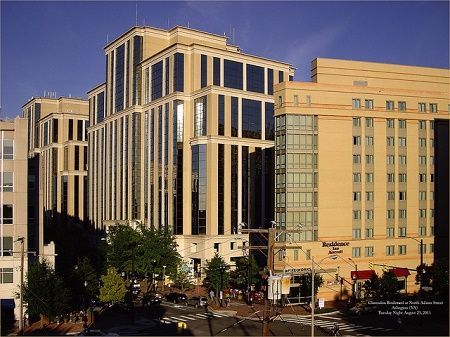
Overall Score: 64
Health Score: 91
Arlington is rated of AARP’s top 3 cities to stay healthy in, along with San Francisco and Novato, CA. Being so close to the nation’s capital gives residents plenty of opportunities to access care, as well as exercise options, like walking on the mall or paddle-boating in the Potomac. Where Arlington loses points is in the high cost of living; monthly housing costs are more than double the national average.
Image via Flickr user Ron Cogswell/Creative Commons License

Overall Score: 64
Health Score: 67
A new high-speed rail line in Minneapolis is helping residents get around the city easier and reducing the amount of traffic on the left bank of the Mississippi River. Minneapolis is also a very diverse city with compact neighborhoods filled with residential and commercial properties. The 52% high school graduation rate is an area where the city struggles.
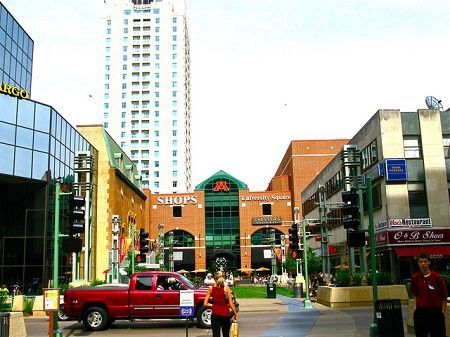
Overall Score: 64
Health Score: 71
The hometown of the Mayo Clinic definitely does well on the “health” portion of AARP’s evaluation. High patient satisfaction and fewer unnecessary hospitalizations are some of the strengths of the city. Rochester’s scores across the board are positive and above the national average. The one ding on the city’s report card is a lack of public transportation.
Image via Flickr user Kim Schuster/Creative Commons License

Overall Score: 66
Health Score: 60
Sioux Falls rates very highly with AARP in opportunity, with nearly one job for every person in the city. The largest city in South Dakota is named for the waterfalls that run through its downtown park, where sculptures change often on an artwalk. Like its neighbor to the north, Fargo, Sioux Falls is a large city with the heart of a small town. The town is also well-wired: 94% of residents have access to high-speed, low-cost internet.

Overall Score: 66
Health Score: 71
Like its neighbor on the left bank, the right bank of the Mississippi River is home to the highly livable city of St. Paul. Good transportation and affordable housing make this Twin City a great place to live, particularly for those attending University of Minneapolis, which has buildings located in both cities. More than 250 buses or trains run in the city every hour! Just like Minneapolis, though, St. Paul does struggle with high school graduation rates and some issues with air pollution.
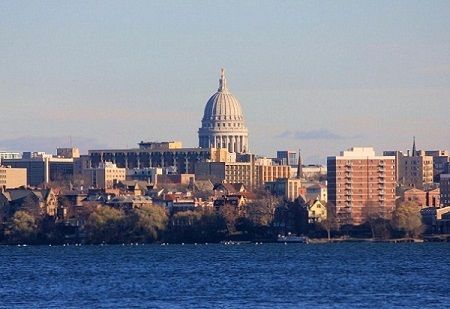
Overall Score: 68
Health Score: 73
Wisconsin’s capital city, located on Lake Mendota, is home to students, legislators, and business people alike. The average Madison resident has at least 3 parks within a half-mile of their home, and can find everything they need to live and work within a close radius of their home. “Mad-Town” is also home to plenty of cultural attractions, put on by the University of Wisconsin as well as local organizations. Not to mention the University’s Babcock Hall Dairy Store, where agriculture students learn hands-on about the dairy industry … and sell cheese and ice cream to the public!
